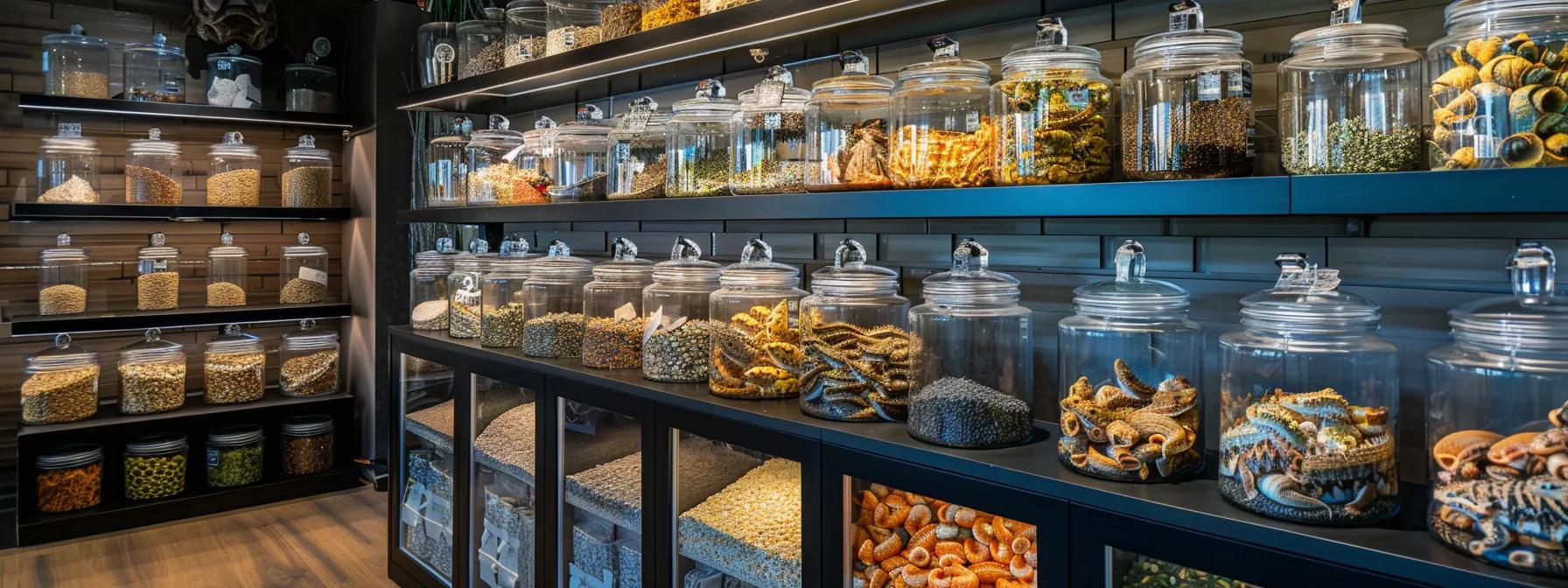
Best Substrates for Reptiles: Which One Reigns Supreme?
Selecting the right substrate for reptile enclosures is crucial for both the health and behavioral well-being of these unique pets. For reptile enthusiasts, choosing a safe bedding material goes beyond aesthetic appeal, as it directly influences daily activities such as thermoregulation, humidity control, and digestion. Reptiles rely on proper substrate to mimic their natural environment—not only to support natural behaviors like burrowing or basking but also to reduce common health risks like impaction, mold growth, or even chemical exposure. With numerous options available—from paper-based bedding to natural soil mixtures—the decision often hinges on the species-specific needs, enclosure design, and ease of maintenance.
This comprehensive article examines the significance of substrate choice in reptile care, addressing various key factors such as safety, maintenance, and ecological enrichment. By explaining how different substrates impact physical health, behavior, and overall enclosure aesthetics, this guide empowers reptile owners to make informed decisions that promote longevity and quality of life for their pets. Additionally, the discussion covers potential pitfalls associated with unsuitable materials, including dust issues, toxic contaminants, and the risk of gastrointestinal blockages. With detailed insights into the benefits and drawbacks of popular substrate types like coconut fiber, cypress mulch, and bioactive soil mixes, the reader will gain a deep understanding of how to create an ideal terrarium environment.
The article is structured into several sections, each focusing on specific aspects of substrate usage—from understanding substrate significance to reviewing leading safe choices and the proper care and maintenance of these materials. By delving into both naturally derived substrates and commercial formulations, this guide reflects the latest advancements in herpetological care. Ultimately, proper substrate selection is not merely a design decision but a cornerstone of reptile husbandry that affects feeding behavior, moisture retention, and environmental simulation.
Transitioning from the importance of substrate choice to detailed evaluations of specific types, the following sections will explore the multifaceted role substrates play in tropical, desert, and specialized setups. This information will help hobbyists and professionals alike tailor their enclosures to meet the precise needs of species ranging from bearded dragons to aquatic turtles.
Key Takeaways
- Proper substrate selection is essential for maintaining reptile health, supporting natural behaviors, and ensuring an optimal terrarium ecosystem.
- Each substrate type presents unique benefits and challenges that must be matched with the specific needs and behaviors of the reptile.
- Inappropriate substrate choices can lead to serious health issues such as impaction, respiratory problems from dust, and exposure to harmful chemicals.
- Routine maintenance and periodic substrate changes are critical to sustaining a hygienic and supportive environment for reptiles.
- A detailed understanding of substrate properties supports better decision making in enclosure design and pet care.
Understanding Substrate Significance for Reptile Health and Safety
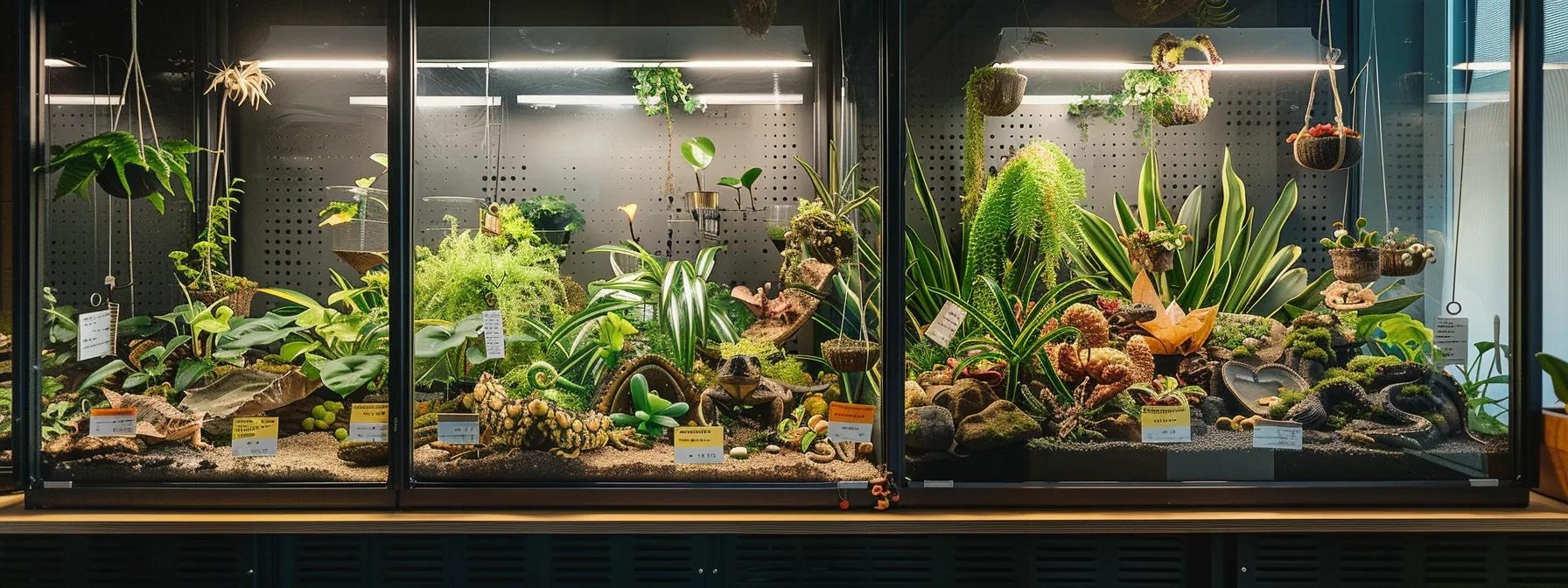
Understanding substrate significance is vital because the bedding material in a reptile enclosure does much more than just cover the floor; it creates the living ecosystem that supports your pet’s health and daily activities. Terrarium flooring impacts a reptile’s daily life by providing critical elements such as thermal regulation, moisture retention, and naturalistic textures that encourage natural behaviors like burrowing, climbing, or basking. For instance, a well-chosen substrate can regulate humidity levels essential for shedding, while a poorly chosen one might contribute to respiratory issues or even gastrointestinal impaction.
The connection between substrate choice and reptile wellbeing is underscored by scientific studies that investigate how natural environments benefit reptiles. In natural habitats, various substrates support a range of biological processes. In captivity, replicating these conditions is essential; inadequate substrate might not control temperature fluctuations efficiently or could encourage mold growth, leading to immune system challenges. The right substrate also reduces stress by mimicking the texture and composition that reptiles would encounter in the wild, contributing to both physical and emotional health.
Identifying key functions of quality reptile bedding involves evaluating factors such as absorbency for moisture management, insulation for maintaining stable temperatures, and biodegradability for ease of cleaning. While many substrates provide these functions, their effectiveness often depends on the reptile species. Natural behaviors, such as digging in desert species or climbing in arboreal species, are stimulated by substrates that provide an appropriate surface texture and depth. When the substrate replicates natural terrain, reptiles are more likely to exhibit normal behavioral patterns, reducing stress and promoting long-term health.
Potential health issues stemming from incorrect substrate selection can include impaction from ingesting loose particulate matter, respiratory complications from airborne dust, or toxic reactions from chemically treated materials. For example, substrates with excessive dust can lead to chronic respiratory infections, while untreated wood particles might harbor bacteria. Overall, the substrate becomes an integral part of the reptile’s habitat, influencing not only comfort but also overall physiological and behavioral health.
Thus, understanding the substrate's role is vital for ensuring that reptiles have an environment conducive to natural growth and longevity, forming the foundation for proper care and enrichment. Given these implications, careful research and planning are essential when deciding on the ideal substrate for any reptile enclosure.
Reviewing Leading Safe Substrates for Reptile Enclosures
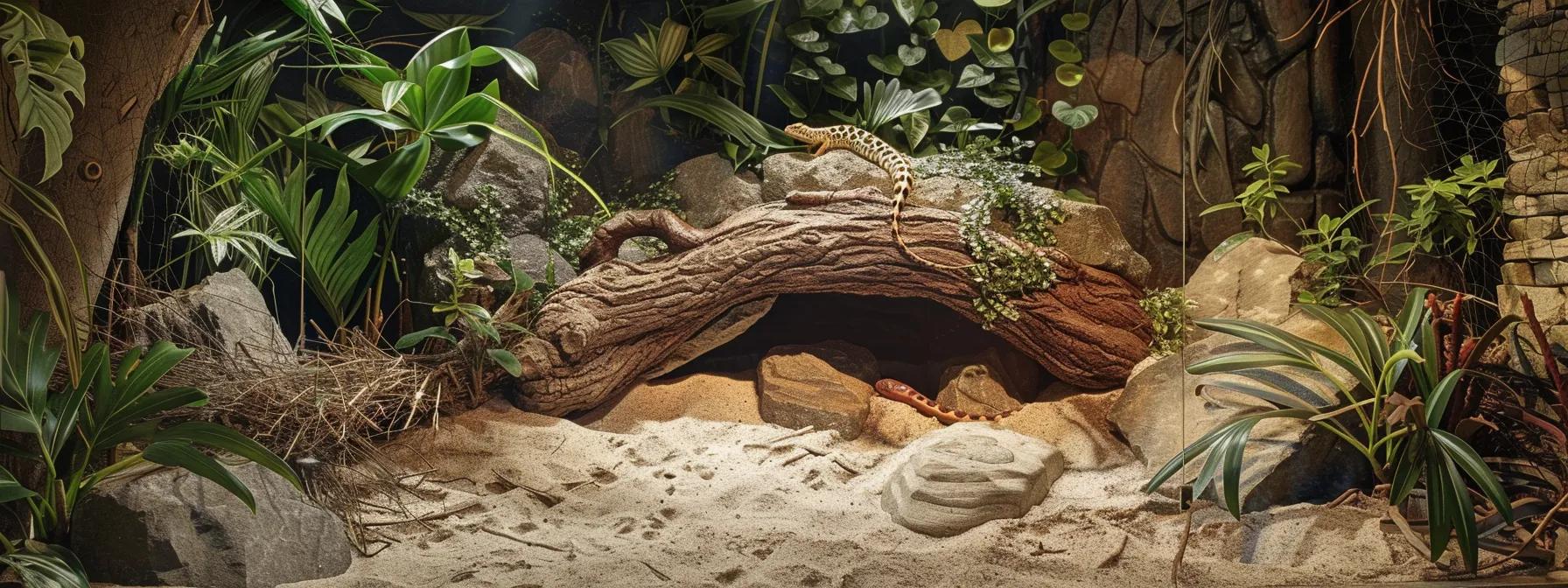
Reptile caretakers must select substrates that are both safe and practical for daily maintenance. Leading safe substrates offer benefits such as reduced dust production, enhanced moisture retention, and ease of cleaning, all of which contribute to a healthier and more naturalistic enclosure environment. This section reviews some of the most recommended options, evaluating their properties and suitability for different types of reptile species.
Top Paper-Based Substrates for Easy Reptile Care
Paper-based substrates, such as paper towels or recycled paper products, are beloved due to their simplicity and cleanliness. These substrates excel in ease of use and can be extremely beneficial for hatchlings and ill reptiles. They provide a non-toxic, low-dust option that is easy to spot-clean and replace on a regular basis. While paper substrates do not mimic natural environments, their predictability and low risk of impaction make them a sensible choice for young, convalescing, or newly introduced reptiles. In addition, using paper-based bedding can help prevent moisture buildup and mold in humid climates, as the material does not retain water like some natural substrates can.
Examining Coconut Fiber Reptile Bedding Benefits
Coconut fiber, also known as coir, is increasingly popular in reptile enclosures because of its natural origin and impressive moisture retention capabilities. Derived from the husk of coconuts, this substrate is highly absorbent and helps maintain a stable humidity level, which is critical for species that require moist environments. Reptiles, such as chameleons and certain tropical lizards, can benefit from the subtle, fibrous texture of coconut fiber that encourages natural digging instincts while providing an excellent base for live plant growth. Moreover, its biodegradability allows for easy composting when replaced, making it an eco-friendly option.
Assessing Cypress Mulch as a Terrarium Option
Cypress mulch is another safe substrate known for its natural aroma and ability to bind moisture effectively. Its coarse texture is particularly suitable for reptile species that engage in burrowing, as it provides a stimulating yet secure surface. Cypress mulch affords an earthy appearance that enhances the bioactive aspect of terrarium setups while reducing bacterial growth due to its natural oils. However, it is important to monitor for any potential allergic responses in sensitive reptiles and to control moisture levels to prevent fungal overgrowth. Cypress mulch, when properly maintained, forms a substrate that supports both the aesthetic and functional requirements of terrarium ecosystems.
Considering Sphagnum Moss for Humidity Loving Reptiles
Sphagnum moss is an ideal substrate for reptiles that thrive in high humidity environments. Its unique absorbency and softness replicate the damp, cushiony ground found in rainforests, offering an environment that aids in shed quality and overall skin health. Sphagnum moss not only serves as a bedding material but also acts as a natural air filter, reducing pathogen exposure by maintaining consistent moisture levels. For species such as dart frogs and certain tropical geckos, incorporating sphagnum moss within a larger substrate mix can stimulate ground-level activity and natural behaviors. While moss requires regular maintenance to avoid over-saturation and mold growth, its benefits for maintaining humidity and providing a naturalistic habitat are significant.
Evaluating Bioactive Soil Mixes for Naturalistic Setups
Bioactive soil mixes combine organic materials with live microorganisms and beneficial invertebrates to create a self-sustaining ecosystem within the terrarium. This substrate mimics natural forest floors and creates conditions that promote live plant growth and organic waste decomposition. For reptiles housed in larger, bioactive setups such as those for bearded dragons or iguanas, these soil mixes assist with natural recycling processes. Bioactive mixes rapidly break down waste through microbial activity, reducing the need for frequent deep cleaning while providing an intricate network of life that enhances ecological authenticity. Although these substrates demand a higher initial setup investment and ongoing subtle management, their capacity to create enriched, biologically active environments makes them a high-performing option.
When comparing these substrates, it becomes clear that each offers unique benefits tailored to different reptile needs. Paper-based options ensure superior cleanliness and low risk to vulnerable individuals, while organic materials like coconut fiber and cypress mulch deliver a balance between natural mimicry and functional moisture management. Sphagnum moss caters to specific humidity demands, and bioactive mixes offer comprehensive ecosystem support for advanced keepers. Reptile owners must weigh these features according to their reptile’s natural habitat requirements and the practicalities of daily maintenance.
Below is a table summarizing the key features of these leading safe substrates:
| Substrate Type | Key Benefit | Ideal For | Maintenance Level | Eco-Friendliness |
|---|---|---|---|---|
| Paper-Based | Cleanliness and low dust | Hatchlings and ill reptiles | Low – replace frequently | High |
| Coconut Fiber (Coir) | Excellent moisture retention | Tropical reptiles and lizards | Moderate – requires monitoring | Moderate |
| Cypress Mulch | Promotes natural burrowing | Burrowing species (snakes, lizards) | Moderate – watch moisture | Moderate to High |
| Sphagnum Moss | High humidity and skin health benefits | Humidity-loving species (frogs, geckos) | High – needs regular care | High |
| Bioactive Soil Mix | Self-sustaining ecosystem | Larger enclosures for active species | High – complex setup | Very High |
This table underlines the importance of choosing a substrate that not only meets the immediate aesthetic and functional needs but also evolves with the long-term care strategy of the reptile. By evaluating substrate characteristics such as moisture retention, dust levels, and compatibility with biological cycles, pet owners can ensure that their reptile enclosures offer both safety and enrichment.
Selecting the Best Substrates Tailored to Specific Reptile Types
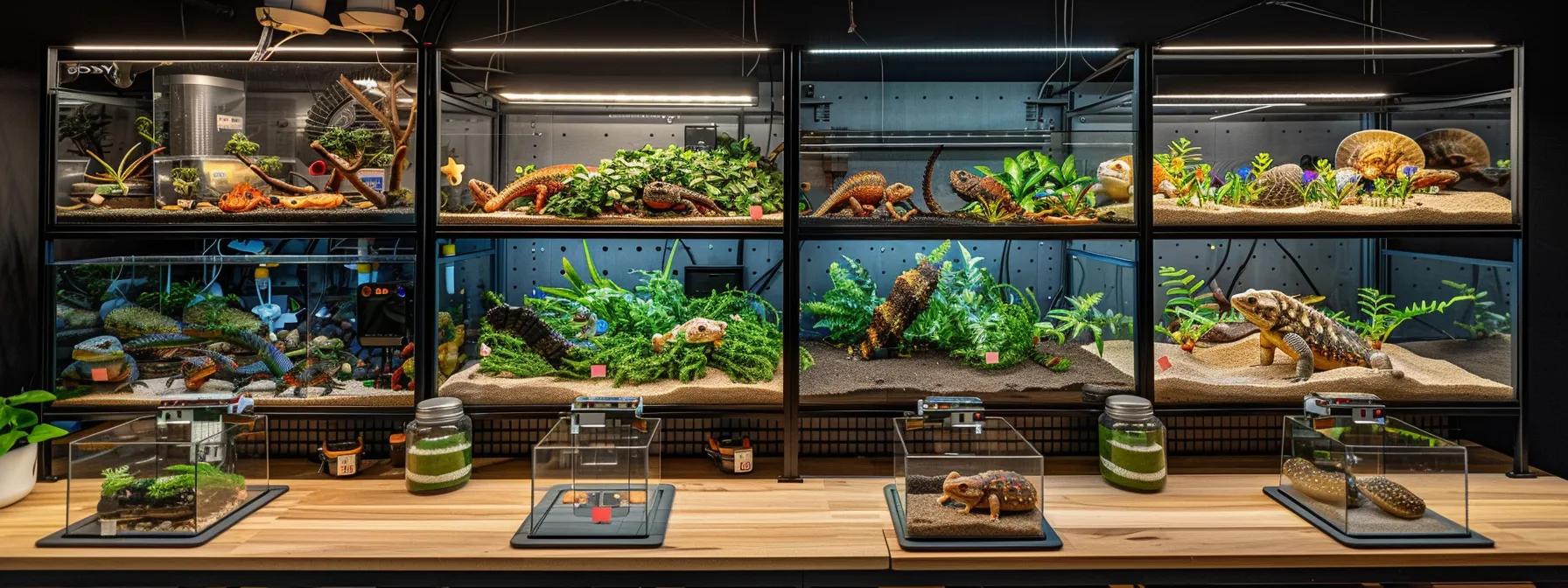
Different reptile species have unique environmental and behavioral needs. Selecting the best substrate for each type ensures that reptiles not only feel at home but are also provided with optimal conditions for their natural activities and overall health. For desert dwellers, substrates that replicate arid soils are essential, while tropical species require materials that maintain higher humidity levels.
Ideal Terrarium Options for Desert Dwelling Reptiles
Desert dwelling reptiles, such as various species of Uromastyx and some geckos, thrive in dry, sandy soils that closely resemble their natural habitats. The best terrarium options for these species involve substrates that offer excellent drainage, low moisture retention, and a texture conducive to burrowing. Sand mixed with a small amount of gravel or textured mineral substrates provides a balance between a natural look and practical functionality. These substrates enable desert species to regulate their body temperature efficiently through sun-basking and evaporation. Furthermore, low moisture retention helps to prevent mold growth and minimizes dehydration risks inherent with overly damp substrates. Ideally, a reptile keeper should aim to select substrates that are less likely to form clumps when disturbed; this avoids possible ingestion and subsequent impaction—a notable risk for species that like to forage in their environment.
Choosing Healthy Substrates for Tropical Reptile Habitats
In contrast, tropical reptiles require substrates that not only mimic the rainforest floor but also maintain consistent humidity levels. For species like green iguanas, chameleons, and other arboreal reptiles, moist environments foster better shedding, reduce stress, and create an ideal microclimate for plant growth. Substrates such as a mix of organic topsoil, coconut coir, and sphagnum moss work synergistically to offer both moisture retention and natural aesthetic appeal. This combination supports both the reptile and the ancillary flora that contribute to the terrarium’s ecosystem. Additionally, tropical substrates should be free from pesticides or chemical additives that might disrupt the delicate balance of the ecosystem, ensuring that the food chain – from leaf litter to live plants and insects – remains vibrant and safe for the pet.
Safe Bedding Choices for Snakes
Snakes are sensitive to texture and particulates since they often ingest substrate inadvertently during feeding or shedding. Safe bedding choices for snakes include substrates that minimize dust and clumping. Options such as newspaper, reptile carpet, or finely shredded aspen bedding provide a non-abrasive surface that reduces the risk of respiratory issues and impaction. Furthermore, these substrates are easy to maintain and disinfect, which is critical given snakes’ susceptibility to bacterial infections. When setting up an enclosure for snakes, it is crucial that the bedding does not harbor harmful microorganisms, as many venomous or large constrictor species have specific hygiene needs.
Optimal Substrates for Lizards and Their Unique Needs
Lizards, including popular varieties like leopard geckos and bearded dragons, require substrates that allow for both basking and burrowing. For these species, options may include reptile sand, a mix of sand and soil, or even reptile-safe ceramic tiles for a more controlled surface. The substrate should be designed in such a way that it supports the reptile during thermoregulation and locomotion while also enabling natural behaviors such as dust bathing and digging. Additionally, substrates for lizards should be chemically inert to avoid adverse reactions and must be free from sharp fragments that may injure delicate feet. Ensuring that the substrate is non-toxic and easy to clean is a key consideration for long-term health, particularly since lizards may ingest small particles inadvertently.
Substrate Considerations for Turtles and Tortoises
Turtles and tortoises, being semi-aquatic or terrestrial respectively, require durable substrates that can withstand both moisture and repeated contact. For aquatic turtles, smooth substrates like large river rocks or sealed ceramic tiles are preferable to prevent injury when the reptile is in water. Tortoises, on the other hand, benefit from substrates that simulate a natural, earthy environment—often a mixture of topsoil, sand, and organic compost enhances natural burrowing behavior and supports their dietary habits. It is also crucial that substrates for tortoises are slightly abrasive to help maintain healthy beaks and nails. The long-term stability of these substrates means they are less likely to shift or become ingested, and their composition supports an environment that mimics the arid, open spaces many tortoises naturally inhabit.
Below is a table summarizing substrate recommendations based on reptile type:
| Reptile Type | Recommended Substrate(s) | Key Considerations | Maintenance Requirements |
|---|---|---|---|
| Desert Dwelling Reptiles | Sand with gravel, mineral substrates | Excellent drainage, low moisture retention | Low – periodic cleaning |
| Tropical Reptiles | Organic topsoil, coconut coir, sphagnum moss | High humidity, support for live plants | Moderate – requires frequent misting and monitoring |
| Snakes | Newspaper, reptile carpet, aspen bedding | Low dust, non-clumping, easy disinfection | Low – replace frequently |
| Lizards | Mixed sand-soil, reptile sand, ceramic tiles | Supports basking/burrowing, non-toxic | Moderate – regular spot cleaning |
| Turtles and Tortoises | River rocks, ceramic tiles (turtles); soil-sand mix (tortoises) | Safe under water exposure, mimic natural habitat | High – regular substrate replacement |
Each reptile species has evolved to thrive under specific environmental conditions, and substrate choice is integral to recreating these conditions within enclosures. By matching the substrate to the natural habitat characteristics of the reptile, keepers not only enhance their pet's health and longevity but also ensure that behaviors critical to their wellbeing are encouraged.
Identifying Unsafe Reptile Substrates to Protect Your Pet
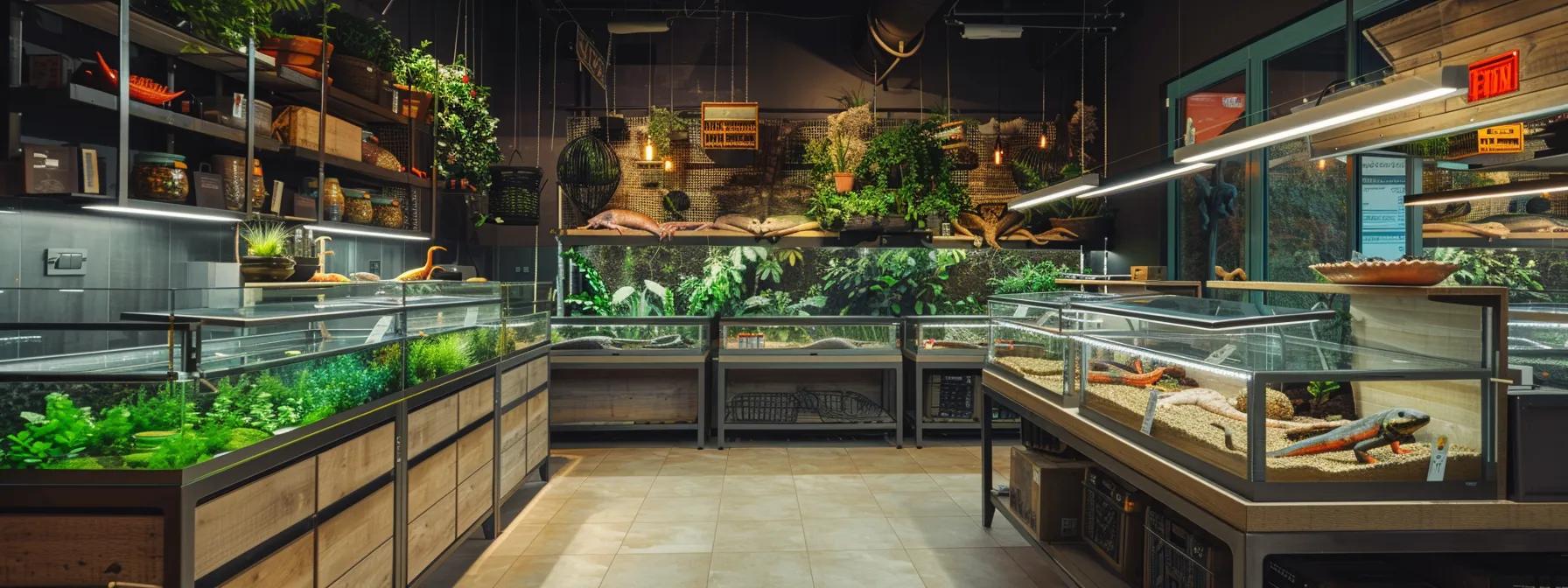
While selecting the right substrate is essential for promoting a healthy captive environment, it is equally important to identify and avoid materials that could potentially harm your reptile. Unsafe substrates may indicate risks such as impaction, toxic exposure, or the growth of harmful bacteria and mold. Common bedding materials that pose risks to reptiles must be scrutinized carefully by experienced keepers.
Common Bedding Materials That Pose Risks to Reptiles
Substrates that are frequently marketed for ease of use might, in reality, contain elements that lead to serious health issues. For example, finely shredded wood bark can produce significant amounts of dust which, over time, may lead to respiratory complications or cause gastrointestinal impaction if ingested inadvertently during normal feeding behaviors. Loose substrates such as sand, when not formulated specifically for reptile care, might pose a choking hazard. Additionally, certain types of mulch and decaying organic matter can harbor toxic mold spores if not kept dry and clean. These dangers underline the need for reptile owners to remain vigilant about the products they choose, always favoring substrates that have been proven safe through rigorous testing and veterinary endorsements.
Recognizing Signs of Impaction From Substrate Ingestion
Impaction is one of the most common health issues associated with improper substrate choice. Ingested substrate particles can accumulate in the digestive tract, obstructing normal passage and causing a range of symptoms including lethargy, loss of appetite, and abnormal droppings. Owners should be aware of behavioral cues such as repeated head-shaking, prolonged periods of inactivity, or visible bloating in the animal’s abdomen. Early detection is crucial, as untreated impaction can become life-threatening. Regular monitoring of the reptile’s behavior and a periodic schedule for substrate replacement can help avert these dangerous situations.
Avoiding Substrates Prone to Mold and Bacterial Growth
Certain organic substrates that absorb moisture, such as untreated soil or wood fibers, can foster an environment conducive to mold and bacterial proliferation if not properly maintained. The growth of these microorganisms not only alters the chemical composition of the substrate but may also release harmful spores or toxins into the enclosure. Such an environment compromises the respiratory health of your reptile and may lead to systemic infections. It is therefore critical to avoid substrates that have high organic content without proper treatment and to ensure that any natural materials used are periodically sanitized by careful spot cleaning or full substrate replacement.
Understanding Dust Concerns With Certain Reptile Bedding
Dust is a visible enemy in many reptile enclosures, particularly when using substrates such as kiln-dried wood or chemically processed sands. Inhalation of these dust particles can lead to chronic respiratory issues, which are especially dangerous for smaller, more delicate species. Dust accumulation in an enclosure also forces keepers to increase cleaning frequency, thereby elevating the risk of accidental ingestion or disruption of the established ecological balance. Choosing low-dust substrates, or those designed with minimal particulate release, is essential to maintaining long-term respiratory health.
Chemical Contaminants in Some Commercial Substrates
Even substrates marketed as “safe” may contain harmful chemical contaminants if not produced with strict quality control. Some commercial reptile beddings can include additives intended to prolong shelf life or mimic natural color, but these chemicals may leach into the environment over time. Exposure to these contaminants, such as pesticides or synthetic binders, can impair the immune system and lead to skin irritations or digestive issues. Reptile owners are advised to verify the safety data sheets (SDS) and manufacturer recommendations for any substrate and opt for products that utilize natural, certified ingredients without artificial enhancements.
The table below summarizes common unsafe substrate types and their potential risks:
| Unsafe Substrate Type | Potential Risk | Key Warning Signs | Mitigation Strategy | Alternative Recommendation |
|---|---|---|---|---|
| Shredded Wood Bark | Dust production; risk of impaction | Respiratory issues; lethargy | Avoid or use low-dust formulations | Paper-based substrates |
| Untreated Organic Mulch | Mold and bacterial growth | Mold spots; foul odor | Regular cleaning and monitoring | Cypress mulch with treatment |
| Fine Sand (Non-reptile grade) | Ingestion leading to impaction | Reduced appetite; bloating | Use reptile-specific sand mixes | Crushed volcanic rock |
| Chemically Treated Substrates | Chemical leaching; toxicity | Skin irritations; behavior changes | Verify SDS; choose natural products | Coconut fiber or bioactive mixes |
| Dusty Kiln-Dried Wood | Chronic dust exposure; respiratory issues | Sneezing; inflamed nostrils | Increase humidity; frequent cleaning | Low-dust paper or reptile carpet |
By remaining vigilant and informed about substrate risks, reptile keepers can proactively protect their pets from unsafe bedding materials. Regular evaluation and maintenance of the enclosure’s environment are essential steps to ensuring that the chosen substrate consistently supports the reptile’s health instead of compromising it.
Proper Maintenance of Reptile Substrates for a Healthy Environment
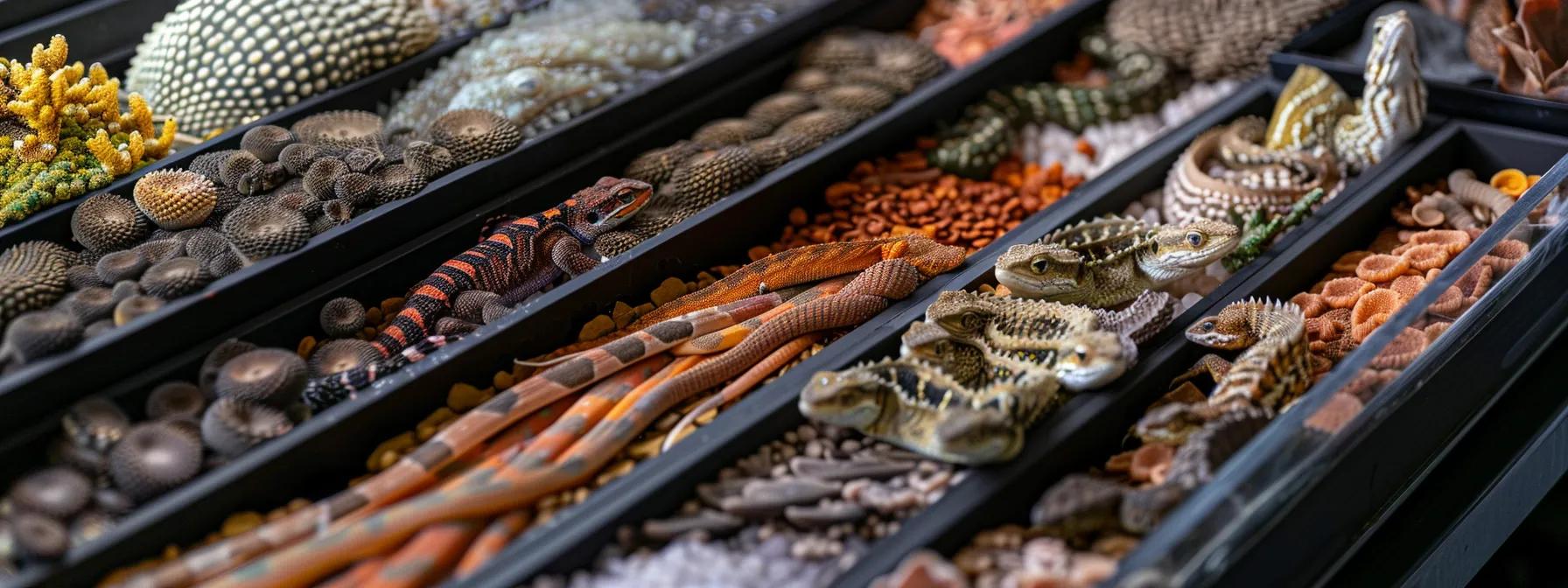
Even the best substrate will underperform if not properly maintained. Maintaining a stable and healthy environment in a reptile enclosure requires regular cleaning, spot maintenance, and full substrate changes at appropriate intervals. The longevity and performance of a substrate are directly tied to how well it is cared for, reflecting on the overall health of the reptile and the appearance of the terrarium.
Establishing a Cleaning Schedule for Your Terrarium Bedding
A systematic cleaning schedule is crucial in preventing the buildup of feces, mold, and bacteria within the enclosure. Depending on the substrate and the species of reptile, the cleaning frequency may vary from weekly spot cleaning to complete substrate replacement every few months. A routine schedule not only ensures that visible waste is removed but also helps in maintaining optimal humidity levels and preventing the spread of pathogens. For instance, substrates like paper-based bedding should be replaced more frequently due to their non-reusable nature, while more robust organic substrates may benefit from partial cleaning combined with periodic full changes. An effective cleaning schedule balances the need for pristine conditions with the stability of a bioactive setup where invertebrates and beneficial microbes play a role in breaking down waste.
Techniques for Spot Cleaning Reptile Enclosures
Spot cleaning is an essential practice to address minor messes without disrupting the entire enclosure environment. This process involves using reptile-safe disinfectants and gentle tools to remove fecal matter, uneaten food, or water spills from the substrate surface. It is important that the cleaning products used are non-toxic and safe for reptiles. Additionally, spot cleaning should be done in a way that minimizes disturbance to the live plants and naturalistic elements within the enclosure, particularly if a bioactive substrate is in use. This selective cleaning approach helps maintain a balance between hygiene and the stability of the natural ecological processes occurring within the terrarium.
Performing Full Substrate Changes Safely and Effectively
Full substrate changes are more disruptive but necessary at periodic intervals to remove accumulated contaminants and refresh the living environment. Before initiating a complete change, it is advisable to temporarily house the reptile in a secure holding container that maintains the appropriate temperature and humidity. Once the animal is safely relocated, the cage should be emptied, and all substrate thoroughly removed. This process is often accompanied by sanitizing the enclosure with reptile-safe solutions to eliminate any lingering pathogens. After a proper cleaning and drying period, the floor can be re-lined with fresh substrate, followed by a careful reintroduction of the reptile. A full substrate change not only resets the chemical and biological balance of the terrarium but also allows the keeper to inspect for potential issues such as structural wear or noticeable contamination.
How to Sterilize Substrates When Necessary
In cases where the substrate becomes heavily contaminated or signs of mold and bacterial activity are observed, sterilization may be required. Methods such as heat treatment (oven drying on low settings) or using ultraviolet (UV) light can be employed to sanitize substrates without altering their physical properties drastically. It is essential to allow the substrate to cool and rehydrate appropriately before reintroducing it into the enclosure. When choosing a sterilization method, the keeper should consider the sensitivity of the substrate material and the safety of future reptile exposure. Proper sterilization ensures that the substrate does not become a reservoir for pathogens, thereby supporting a safer and more robust habitat.
Extending the Life of Your Chosen Reptile Bedding
To prolong the functional lifespan of an enclosure substrate, routine maintenance is paramount. Regularly turning or mixing the substrate can prevent moisture pockets and uneven fungal growth. In bioactive setups, ensuring that the invertebrate cleaners and beneficial microbes remain active will naturally extend the substrate’s life. Additionally, careful monitoring for areas that may become compacted or develop mold allows for targeted interventions rather than total overhaul. These practices, when performed consistently, can reduce both the time and financial investment required for full substrate changes while maintaining a healthy living space for the reptile.
Below is a table summarizing substrate maintenance practices:
| Maintenance Task | Description | Frequency | Key Benefit | Recommended Tools |
|---|---|---|---|---|
| Routine Spot Cleaning | Remove fecal matter and uneaten food from substrate | Weekly | Maintains hygiene and prevents mold | Soft brush, reptile-safe disinfectant |
| Full Substrate Replacement | Completely remove and replace bedding | Every 2-3 months | Resets ecological balance, reduces pathogens | Disinfectant solution, gloves, holding container |
| Sterilization | Heat or UV treatment to eliminate pathogens | As needed | Removes harmful bacteria and mold | Oven, UV light reactor |
| Substrate Turning/Mixing | Periodically aerate the substrate | Bi-weekly | Prevents moisture pockets and compaction | Small rake or spatula |
| Monitoring & Inspection | Check for signs of dust, mold, or compaction | Daily/weekly | Early detection of potential issues | Visual inspection, moisture meter |
By establishing and adhering to these maintenance protocols, reptile keepers can significantly extend the life and safety of their chosen substrate while preventing issues that may compromise the health of their pets.
Crafting Enriched Environments With the Best Reptile Substrates
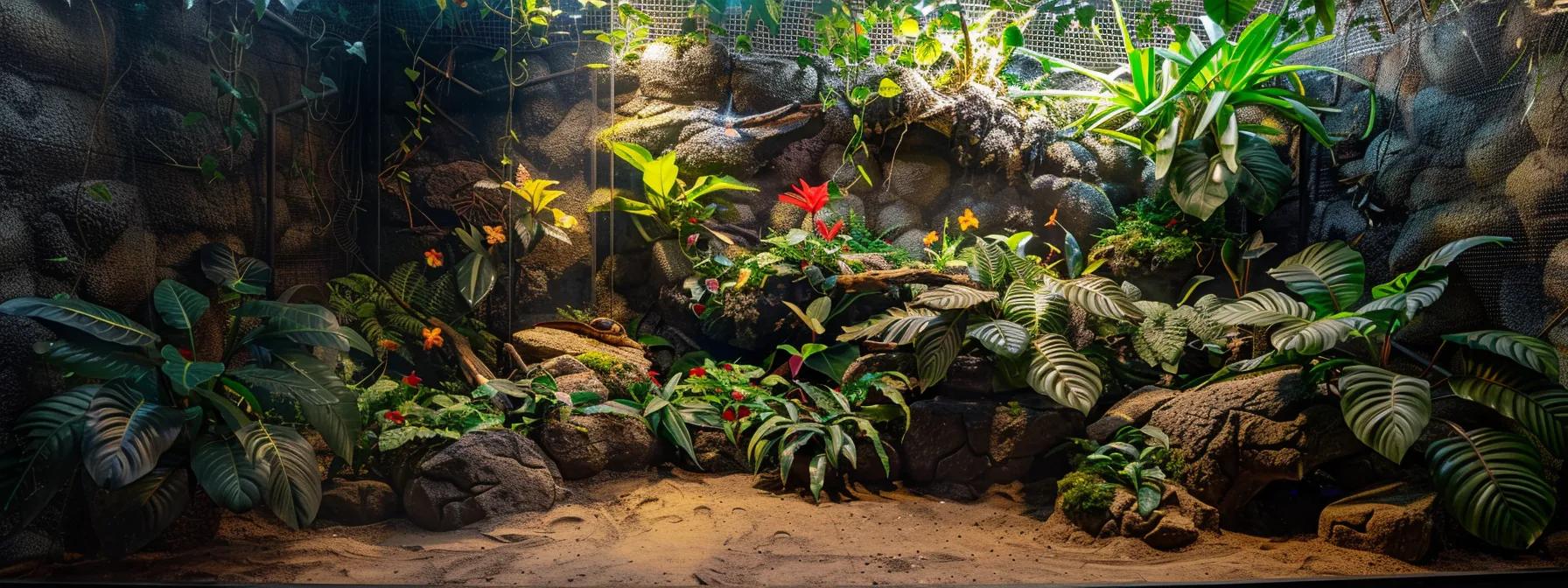
A reptile’s enclosure should be more than just a simple, bare-bones habitat—it should be a meticulously crafted environment that simulates the natural ecosystem of the animal. Crafting enriched environments with the best reptile substrates involves layering techniques, integrating live plants, and providing structures that promote natural behaviors while ensuring safety and ease of maintenance.
Using Substrates to Mimic Natural Habitats for Reptiles
The ideal substrate should replicate the physical and chemical properties of the reptile’s natural habitat. For instance, desert species benefit from substrates that closely mimic arid, sandy soils with scattered rocks, while tropical species thrive on beds of decayed leaves and soft soil rich in organic matter. By selecting substrates that approximate natural terrains, keepers enable their reptiles to engage in instinctual activities such as digging, basking, and foraging. This not only improves the animal's well-being but also reduces stress, a key factor influencing immune response and overall vitality. Moreover, substrates that capture these natural elements foster a more engaging and visually appealing enclosure that can also educate and inspire viewers about biodiversity and natural ecosystems.
Incorporating Burrowing Opportunities With Safe Substrates
For many reptile species, the opportunity to burrow is critical for physical exercise, temperature regulation, and stress reduction. Layering substrates to create a depth that allows for natural digging behaviors adds not only functional enrichment but also enhances the enclosure's realism. Using substrates such as coconut coir, mixed with dried leaves or small pebbles, can provide a comfortable and safe medium for burrowing. This encourages reptiles to exhibit instinctual behaviors that are vital for both physical health and mental stimulation. In addition, the burrowing activity helps in even distribution of body heat and moisture, reducing the risk of localized overheating or drying out.
Layering Techniques for Advanced Terrarium Design
Advanced terrarium designs often employ multiple layers of substrate to recreate a stratified ecosystem. Typically, the base layer might consist of a drainage layer—such as gravel or small rocks—followed by a barrier layer to prevent mixing. On top of this, a fertile layer made of organic materials (like a bioactive soil mix or coconut fiber blend) supports live plants and beneficial microfauna, while the top dressing may include decorative elements such as small logs, rock formations, or even a thin layer of sphagnum moss in humid setups. This method not only replicates the natural soil profile but also plays a critical role in water retention and distribution as well as heat management. Each layer can be maintained separately to ensure the overall system remains evenly balanced and environmentally stable.
Choosing Substrates That Support Live Plant Growth
Integrating live plants into a reptile enclosure enhances the aesthetic and provides additional benefits like natural air filtration and improved humidity control. Substrates that support plant growth are typically rich in organic matter and provide sufficient nutrients while maintaining a pH level that is conducive to both plant and reptile health. A well-chosen substrate mix for planted terrariums might include components like compost, peat, and coconut coir, which together create a balanced medium. Such a mix not only supports the plant roots effectively but also encourages beneficial microorganisms that further enrich the environment. For example, in a bioactive terrarium setup for tree boas or chameleons, the live plants can help regulate moisture, provide necessary cover, and even serve as climbing structures—a key behavioral enrichment.
The Role of Substrate in Maintaining Terrarium Humidity Levels
Proper humidity control is one of the most critical elements in reptile care, and substrate plays an integral role in this process. Humidity-loving species, such as many tropical lizards and frogs, rely on substrates that can hold moisture without becoming waterlogged. The right substrate assists in maintaining stable humidity levels by absorbing excess water and releasing it gradually, thereby reducing the incidence of hot spots or dry areas. For instance, a substrate mix that includes sphagnum moss or coconut coir is particularly effective in retaining moisture while offering a natural microclimate that supports both reptile and plant life. By managing humidity through well-balanced substrate choices, keepers can prevent dehydration and respiratory issues, ensuring the environment remains at an optimal level for the reptile’s specific needs.
Below is a detailed table summarizing the benefits of an enriched terrarium design using appropriate substrate layering:
| Enrichment Aspect | Substrate Component | Key Function | Impact on Reptile Health | Example Species Benefited |
|---|---|---|---|---|
| Natural Habitat Mimicry | Organic topsoil, sand, coconut coir | Simulates native soil profiles, textures | Reduces stress, promotes natural behaviors | Desert lizards, tropical geckos |
| Burrowing Opportunities | Deep layer of coconut coir mixed with sand | Encourages digging and burrowing activity | Enhances physical exercise and behavioral stimulation | Uromastyx, bearded dragons |
| Advanced Layering | Base drainage (gravel), organic layer, top dressing | Creates a stratified ecosystem for water regulation | Improves temperature and moisture distribution | Bioactive setups for iguanas |
| Live Plant Support | Compost, peat, organic mix | Provides nutrients and structure for live plants | Enhances air filtration and humidity control | Chameleons, arboreal lizards |
| Humidity Management | Sphagnum moss, coconut coir | Retains and gradually releases moisture | Prevents dehydration and skin shedding issues | Tropical frogs, chameleons |
Crafting an enriched environment with the right substrate is an ongoing process that requires constant observation, timely maintenance, and a deep understanding of both reptile behavior and ecological dynamics. By layering substrates effectively and integrating live elements, owners can create an ever-evolving habitat that promotes the health and happiness of their reptilian pets.
Identifying Unsafe Reptile Substrates to Protect Your Pet
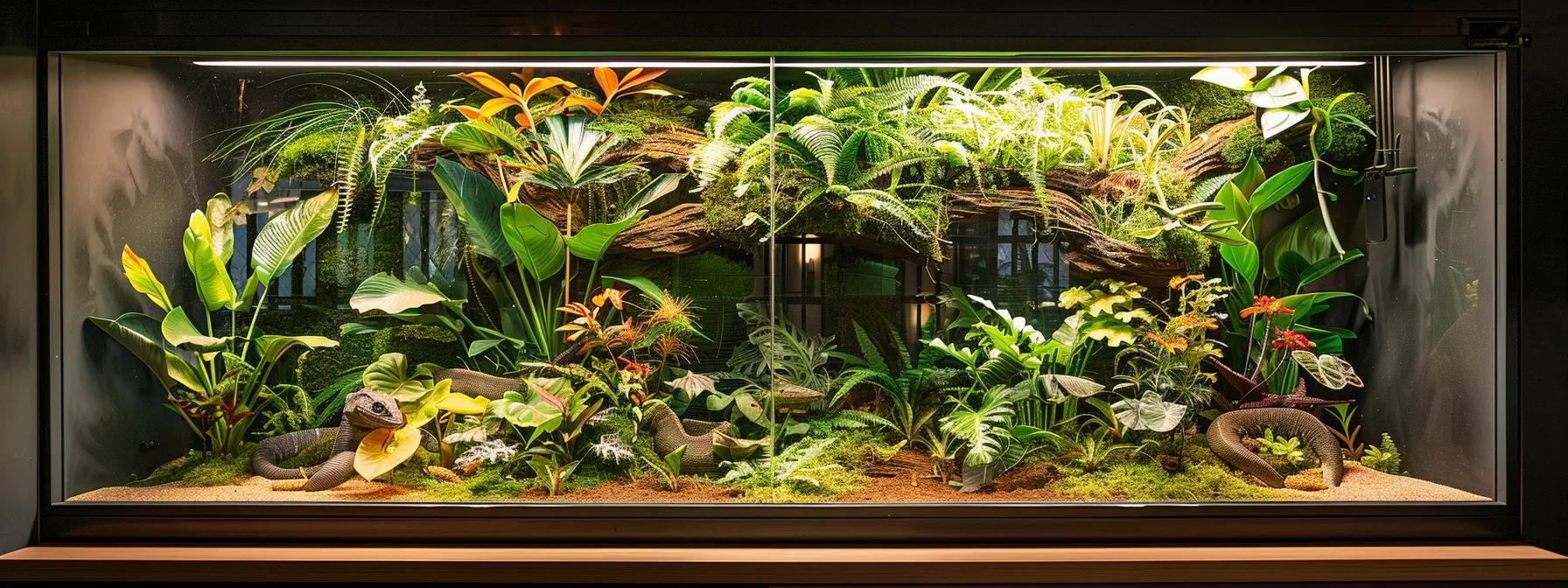
A multitude of substrates exist on the market, but not all are safe for use in reptile enclosures. Identifying which substrates to avoid is critical, as some materials pose severe risks to a reptile’s health. From hazards linked to impaction to the dangers of chemical contaminants, recognizing unsafe substrates can be the difference between a thriving pet and a constant struggle with health complications.
Common Bedding Materials That Pose Risks to Reptiles
Substrates such as finely shredded wood bark and non-reptile-specific sand are notorious for causing issues. These materials can generate excessive dust which, when inhaled, may lead to respiratory distress. Moreover, if a reptile ingests these particles during normal activities, impaction may occur, disrupting the digestive system and potentially necessitating veterinary intervention. Additionally, certain organic mulches might introduce bacteria or mold, particularly if they retain too much moisture in closed enclosures. It is vital that any substrate chosen is free from excessive particulate matter and is formulated with reptile safety in mind.
Recognizing Signs of Impaction From Substrate Ingestion
Impaction occurs when pieces of the substrate are ingested and accumulate in a reptile’s digestive tract, leading to possible blockages. Early signs include a marked decrease in appetite, lethargy, and visible abdominal bloating. Owners should monitor their pets closely for any unusual behavior or physical changes. In severe cases, impaction can cause life-threatening complications that require prompt medical intervention. Regular observation and maintaining an environment with safer substrate options can help prevent such issues from arising.
Avoiding Substrates Prone to Mold and Bacterial Growth
Substrates that are highly organic but not treated or properly maintained can become breeding grounds for mold and bacteria. This is especially problematic in high-humidity setups where moisture retention is excessive. Mold not only compromises the air quality within the enclosure but can also be toxic if inhaled over extended periods. To mitigate these risks, substrates should be chosen based on their ability to resist unwanted microbial growth, and any organic material should be monitored for signs of decay. When signs of mold or foul odor appear, a full substrate change backed by proper disinfection practices is recommended.
Understanding Dust Concerns With Certain Reptile Bedding
Excessive dust in bedding poses a serious risk for respiratory infections, particularly in small or delicate species. Some substrates, even those marketed for reptile care, may generate enough dust to irritate the nostrils and sinuses, leading to chronic respiratory issues. It is essential to use substrates that have been processed to minimize dust while still retaining the necessary physical properties. Low-dust alternatives help maintain a healthier microenvironment and reduce the frequency of cleaning required, thereby lowering the overall risk of exposure.
Chemical Contaminants in Some Commercial Substrates
Not all commercially produced substrates are created equal. Some may contain chemical additives or residues from processing that can be detrimental to a reptile's health. These contaminants can leach into the environment over time, causing skin irritations or even systemic toxicity. It is critical for reptile owners to research the manufacturer’s claims, read safety data sheets, and prefer products that emphasize natural ingredients and certifications for reptile safety. Opting for substrates with minimal chemical processing minimizes the risk of unexpected health complications.
Below is a summary table highlighting unsafe substrate types along with their potential risks and recommendations:
| Unsafe Substrate Type | Potential Risk | Warning Signs | Mitigation Strategy | Safer Alternative |
|---|---|---|---|---|
| Shredded Wood Bark | Dust production, impaction risk | Respiratory issues, lethargy | Avoid or choose low-dust versions | Paper-based or reptile carpet |
| Untreated Organic Mulch | Mold, bacterial growth | Mold spots, unpleasant odor | Regular cleaning and moisture control | Cypress mulch with treatment |
| Fine, Non-Reptile Sand | Ingestion leading to impaction | Digestive blockages, abnormal droppings | Use reptile-specific sand blends | Crushed volcanic rock |
| Chemical Additive Substrates | Toxicity, skin irritation | Skin rashes, behavioral changes | Verify product certifications | Natural coconut coir or bioactive mixes |
| Dusty Kiln-Dried Wood | Chronic dust exposure | Sneezing, irritated respiratory tract | Frequent cleaning, humidity management | Low-dust paper towels or mats |
By diligently avoiding substrates that carry these risks, reptile owners can significantly reduce the likelihood of adverse health outcomes. Regular inspection and immediate response to any emerging issues are key practices in ensuring that the reptile’s environment remains both safe and enriching.
Proper Maintenance of Reptile Substrates for a Healthy Environment
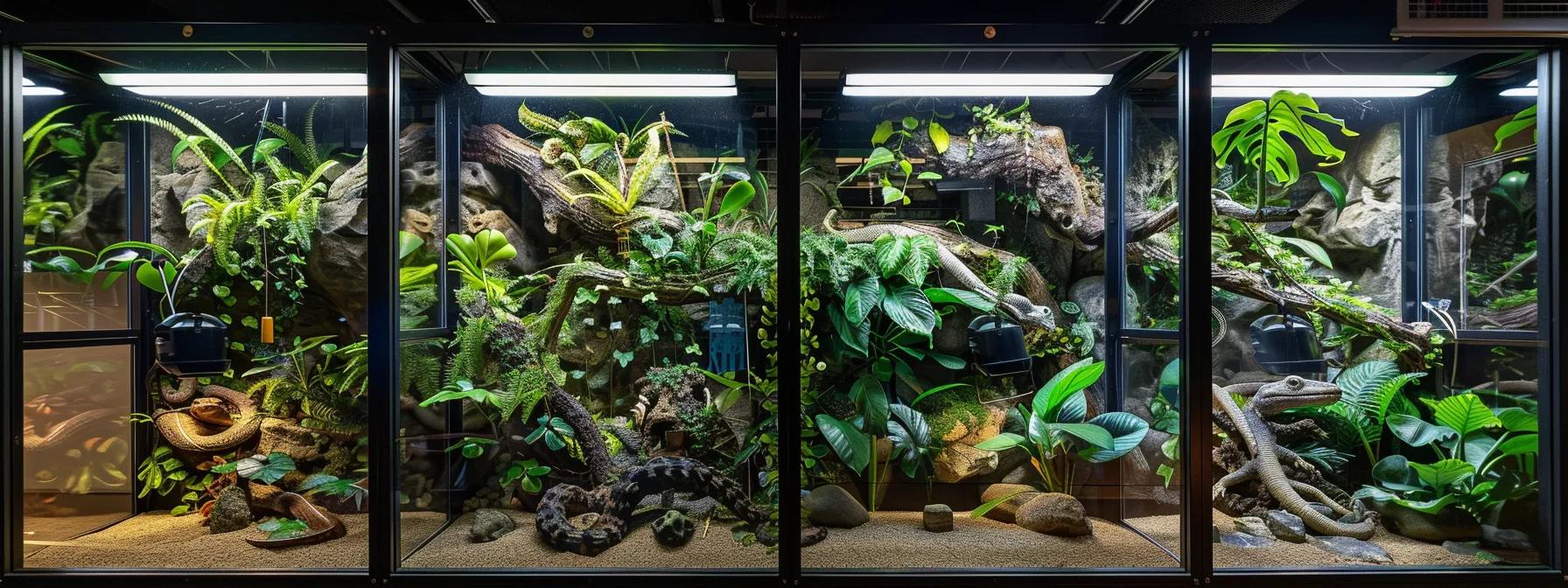
Maintaining a healthy substrate is as important as selecting the correct one. Reptile enclosures are dynamic environments that require regular attention to prevent the onset of diseases. Proper maintenance not only ensures the cleanliness of the habitat but also supports the natural processes that drive a bioactive enclosure's success.
Establishing a Cleaning Schedule for Your Terrarium Bedding
A consistent cleaning schedule is one of the most important components of substrate maintenance. This regularity depends on the type of substrate being used and the particular needs of the reptile species. For example, newspaper or paper-based substrates may need to be replaced weekly due to their absorbent properties, while more durable substrates such as bioactive soil mixes might allow for longer intervals between full cleanings. A cleaning schedule should include spot cleaning of any soiled areas and periodic complete substrate replacements. This routine prevents the buildup of harmful bacteria, minimizes the risk of fungal growth, and ultimately creates a more stable living environment.
Techniques for Spot Cleaning Reptile Enclosures
Spot cleaning is a preventative maintenance technique that addresses localized messes without disturbing the entire habitat. Using reptile-safe cleaning products and tools ensures that the cleaning process does not introduce toxins or irritants into the environment. Owners should remove feces, food remnants, and any visible mold from the surface of the substrate daily or as needed. By targeting only the soiled areas, the overall structure and beneficial microorganism community of the substrate remain intact, which is particularly important in bioactive setups. Regular spot cleaning reduces the frequency of complete substrate changes, thus preserving the ecological balance within the terrarium.
Performing Full Substrate Changes Safely and Effectively
There will be times when a complete substrate replacement is unavoidable. Full substrate changes remove accumulated waste and reset the biological equilibrium of the enclosure. The process involves temporarily relocating the reptile to a secure, climate-controlled container, followed by the removal of the old substrate. Once thoroughly cleaned and disinfected, the enclosure is refilled with a new, correctly prepared substrate. It is critical during full changes to avoid introducing excessive moisture or leaving behind cleaning agents that might harm the reptile. Ensuring a seamless transition minimizes stress for the animal and restores a clean starting point for further environmental enrichment.
How to Sterilize Substrates When Necessary
In certain cases, especially when contamination is severe, sterilization of the substrate may be necessary. Techniques such as heat sterilization or UV exposure can eliminate pathogens without significantly altering the substrate's basic properties. However, sterilization methods must be applied carefully to maintain the substrate's functionality post-treatment. Allowing the treated substrate to return to ambient conditions before reintroducing it to the enclosure is crucial, as any residual heat or chemical residue could harm the reptile. Using sterilized substrate can reset the enclosure’s microbiome and provide a clean slate for introducing beneficial organisms in a bioactive setup.
Extending the Life of Your Chosen Reptile Bedding
Long-term substrate management goes beyond routine cleaning. Proactive strategies such as turning the substrate to aerate it, mixing in fresh organic elements, or periodically adding beneficial microbial cultures can extend the functional life of the bedding. Implementing a maintenance routine that monitors moisture levels, checks for hotspots of contamination, and ensures even wear can reduce the need for frequent replacements, saving both time and resources. Moreover, educating oneself on the specific substrate properties and potential degradation signs will enable timely intervention, thereby protecting the reptile from health hazards.
Below is a summary table outlining key maintenance practices for reptile substrates:
| Maintenance Task | Description | Frequency | Key Benefit | Recommended Tools |
|---|---|---|---|---|
| Routine Spot Cleaning | Removal of localized waste and debris | Daily/Weekly | Prevents buildup of harmful bacteria | Soft brush, reptile-safe cleaner |
| Full Substrate Replacement | Complete removal and replacement of bedding | Every 2-3 months (or as needed) | Resets biological and chemical balance | Disinfectant, gloves, safe container |
| Sterilization | Heat or UV treatment to eliminate pathogens | As necessary | Eliminates toxic microbes and molds | Oven or UV device, thermometer |
| Substrate Aeration | Gently turning or mixing to maintain even moisture | Bi-weekly | Prevents compaction and uneven moisture distribution | Small rake, spatula |
| Monitoring and Inspection | Regular checks for signs of mold, impaction, or dust | Daily/Weekly | Early detection of maintenance issues | Visual inspection, moisture meter |
Implementing these practices effectively prolongs the lifespan of your reptile’s substrate and ensures a consistently healthy environment. This dedication to proper maintenance ultimately contributes to the overall well-being and longevity of the pet.
Crafting Enriched Environments With the Best Reptile Substrates
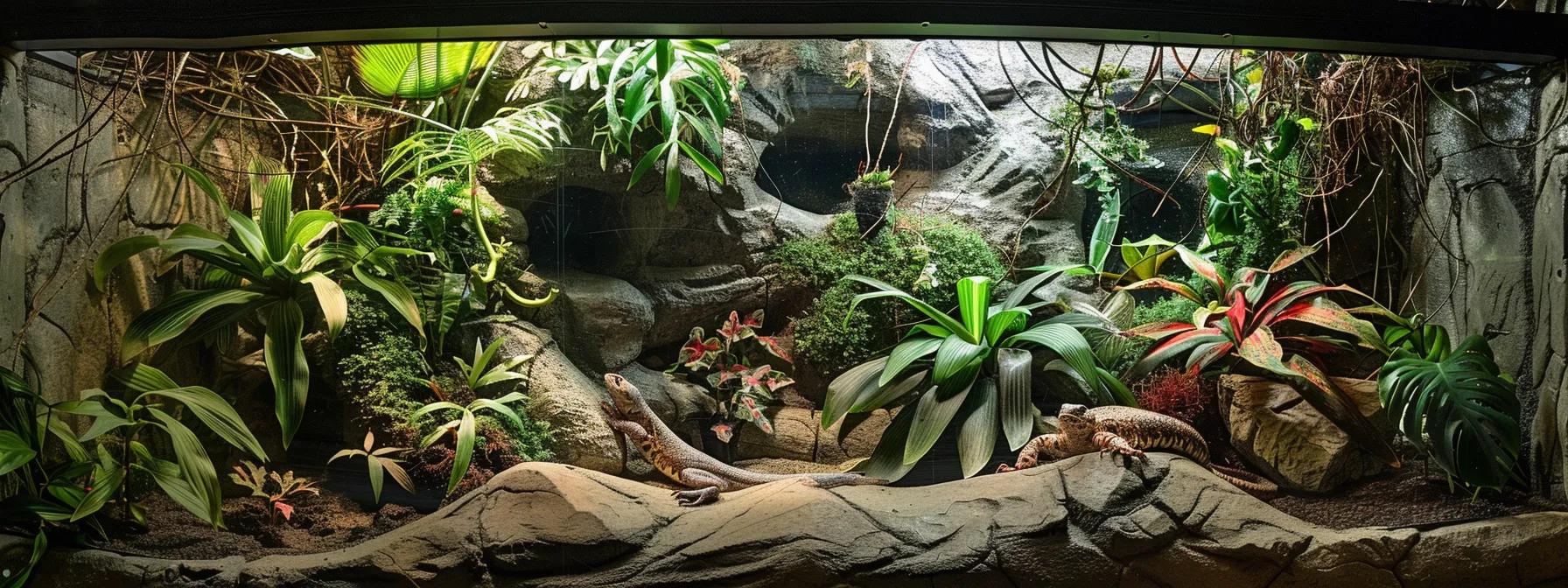
Creating an enriched environment for reptiles involves more than simply filling an enclosure with a safe substrate; it requires thoughtful design that incorporates naturalistic elements and promotes behaviors essential for the reptile’s well-being. By integrating various substrate types, layering them effectively, and selecting materials that foster natural behaviors, owners can design terrariums that provide both aesthetic pleasure and functional benefits.
Using Substrates to Mimic Natural Habitats for Reptiles
A successful terrarium setup replicates the microhabitats that reptiles experience in the wild. For instance, a desert reptile’s enclosure should mimic rocky, sandy outcrops, while a tropical species requires a moist, lush substrate with plenty of organic matter. Creating this natural mimicry involves choosing substrates that not only look the part but also perform critical functions like moisture retention and thermal regulation. Materials such as sand, small pebbles, and mineral-rich soils can be combined in a layered approach to simulate the varying textures found in nature. When substrates closely mimic the natural conditions, reptiles are more inclined to exhibit instinct-driven behaviors, such as basking, foraging, and sheltering. This connection to their natural habitat helps reduce chronic stress conditions often observed in captive reptiles, ultimately promoting robust health and longevity.
Incorporating Burrowing Opportunities With Safe Substrates
Burrowing is an innate behavior for many reptile species, providing shelter, temperature regulation, and even a means of exercise. To accommodate this, an enclosure should include a substrate that allows for digging without compromising the animal’s safety. Substrates such as a deep layer of coconut coir blended with a small proportion of sand or fine mineral deposits create an environment where reptiles can exhibit natural digging behaviors. This not only boosts physical activity but also aids in natural thermoregulation, as reptiles can bury themselves to escape excessive heat or cold. When planning for burrowing, the substrate must be deep enough to allow significant digging depth while still being easy to maintain, ensuring that any deposited waste can be effectively cleaned out during regular maintenance routines.
Layering Techniques for Advanced Terrarium Design
One of the hallmarks of a well-designed terrarium is the use of layered substrates, which provides multiple benefits that go beyond a single homogeneous layer. For example, a base layer of coarse gravel or small pebbles can be used to facilitate drainage, thereby preventing waterlogging in tropical enclosures. Above this, a barrier layer—such as a fine mesh—ensures that the drainage material does not mix with the nutrient-rich, organic top layer. This top layer, which might include a mix of organic compost, coconut fiber, and sphagnum moss, supports live plant growth and offers a soft, natural surface for the reptile to walk on. Advanced layering not only improves moisture distribution and temperature regulation but also creates an environment conducive to beneficial microbial activity. In bioactive setups, this layered approach enables the emergence of symbiotic relationships between plants, invertebrates, and microbes, further enriching the habitat and reducing the overall maintenance burden.
Choosing Substrates That Support Live Plant Growth
An important element in enriched terrarium environments is the integration of live plants, which add a layer of natural complexity that benefits both the reptile and the ecosystem. Substrates that support plant life are typically rich in organic material and nutrients, such as a compost-based mix, which can be combined with coconut fiber to enhance moisture retention. Plants help buffer temperature changes and can improve air quality in the enclosure by absorbing toxins. Moreover, live plants contribute to a more natural appearance that reduces stress for the reptile by simulating aspects of its wild environment. However, the substrate chosen must be carefully balanced to ensure it provides adequate drainage to prevent root rot while still supplying the necessary nutrients to support vibrant plant growth.
The Role of Substrate in Maintaining Terrarium Humidity Levels
Substrate selection plays a critical role in the regulation of humidity levels within a terrarium, which is especially important for species that require a humid microclimate. Substrates with high absorbency, such as sphagnum moss and coconut coir, can hold water effectively and release it slowly over time, ensuring that the enclosure remains at the optimal humidity level. This steady moisture release is crucial for preventing conditions that can lead to dehydration or skin shedding issues. Additionally, managing humidity through the substrate minimizes the need for excessive manual misting, which can disrupt the overall ecological balance. By using a carefully formulated substrate mix, terrarium owners can create a self-regulating humid environment that supports the reptile’s health, encourages the growth of beneficial microorganisms, and sustains live plant life.
Below is a table that summarizes how enriched terrarium design impacts reptile health and enclosure functionality:
| Enrichment Element | Substrate Components Involved | Functionality Provided | Impact on Reptile Wellbeing | Example Species Benefited |
|---|---|---|---|---|
| Habitat Mimicry | Organic soil, sand, coconut coir | Simulates natural terrain textures | Reduces stress, encourages natural behaviors | Desert lizards, tropical geckos |
| Burrowing Opportunities | Deep coconut coir with sand mix | Facilitates digging and shelter creation | Promotes exercise and natural hiding behaviors | Bearded dragons, Uromastyx |
| Layered Substrate Design | Gravel base, mesh barrier, organic top | Enhances drainage and moisture distribution | Supports plant growth, stabilizes temperature | Iguanas, arboreal reptiles |
| Plant Growth Support | Compost mixtures, peat, coconut coir | Provides nutrients and a growth medium | Improves air quality and provides natural cover | Chameleons, tree boas |
| Humidity Control | Sphagnum moss, coconut coir | Maintains stable moisture levels | Prevents dehydration, aids in shedding | Tropical frogs, chameleons |
By leveraging advanced terrarium design concepts, reptile owners can create environments that are not only visually appealing but also contribute tangibly to the animal’s health and natural behavior expression. These enriched environments underscore the importance of substrate as a dynamic and multi-functional component of reptile care.
Final Thoughts
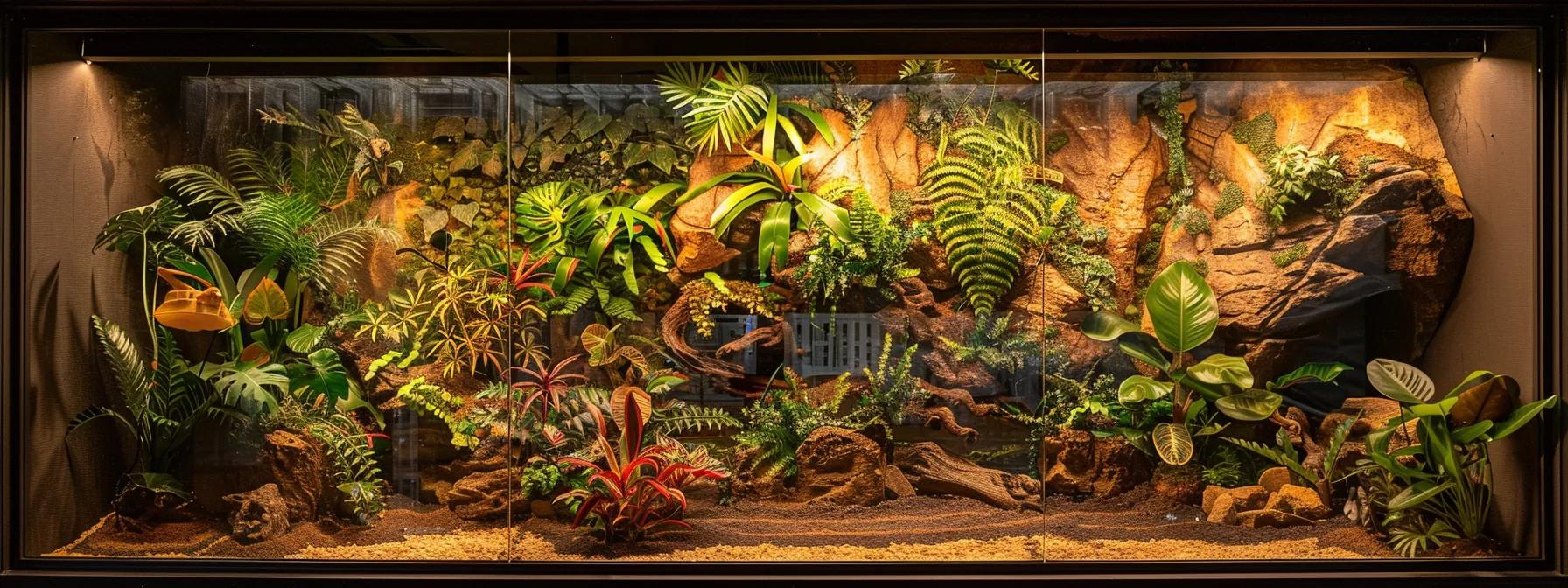
In summary, the selection and maintenance of reptile substrates form the backbone of effective reptile husbandry. With the correct substrate, owners can simulate natural habitats, reduce health risks, and promote natural behaviors, ensuring the overall well-being of their pets. From paper-based options for vulnerable individuals to bioactive soil mixes for complex, enriched environments, a careful evaluation of substrate properties is essential. Regular maintenance, thoughtful layering, and adherence to species-specific needs can greatly enhance the quality of life for reptiles. As research and product advancements continue, staying informed and responsive to new data will further empower keepers to create the perfect home for their scaly companions.
Frequently Asked Questions
Q: What factors should I consider when selecting a reptile substrate? A: Key considerations include species-specific needs, moisture retention, drainage, risk of impaction, and compatibility with natural behaviors. Ensuring the substrate mimics the reptile’s natural habitat helps reduce stress and promote normal activity patterns.
Q: How often should I clean or replace the substrate in my reptile enclosure? A: Frequency depends on the substrate type and the species kept. Paper-based substrates may require weekly changes, while bioactive soil mixes might need a full change every 2-3 months with regular spot cleaning in between.
Q: Are there any substrates to avoid for reptile safety? A: Yes, substrates that produce excessive dust, contain harmful chemicals, or are prone to mold—such as untreated wood bark or non-reptile-specific sands—should be avoided to prevent respiratory issues and impaction.
Q: How can I maintain proper humidity levels with my chosen substrate? A: Using substrates like sphagnum moss or coconut fiber, which have high moisture retention, can help maintain stable humidity. Additionally, layering techniques and regular monitoring are crucial to prevent dehydration and ensure optimal environmental conditions.
Q: Can I mix different substrates in one enclosure? A: Absolutely. Mixing substrates, such as combining a drainage layer with an organic top layer, can replicate natural habitat stratification. This approach supports both plant growth and reptile behavior, provided the mixture is balanced to avoid moisture issues and impaction risks.




